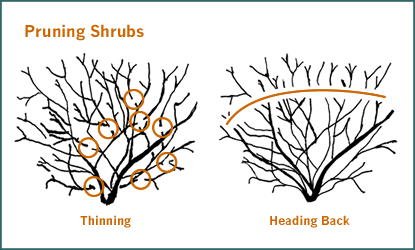Pruning is an important part of the process of thinning out your content. It helps you to focus on what is most important and remove everything else.
Thinning out your content is a process that involves removing unnecessary or redundant content from your website. This can be done by deleting old posts, comments, or blog entries that are no longer relevant to the website’s audience.
Thinning out your content can also involve removing certain sections from the website altogether. For example, if you have a blog about outdoor activities you might want to remove all the recipes because they’re not relevant to what you post about outdoorsy things.
Pruning and thinning are often confused with one another. This can lead to confusion on how they work and what they do.
Pruning is a process where the tree or plant is cut back to just the branches that are necessary for survival. Thinning is a process where the branches that are left are shorter so that there is less foliage in the area. In other words, pruning removes unwanted parts of a plant while thinning leaves less foliage in an area.
A good example of pruning would be cutting back your rose bush every few weeks to make sure it’s not getting too big and taking up too much space in your garden. A good example of thinning would be trimming your rose bush so that it doesn’t get too tall and takes up too much space in your
Pruning is a process of removing unwanted parts from a tree or shrub. Thinning, on the other hand, is a process of removing the thinnings or the small branches and shoots from a tree.
Pruning is used to remove dead, diseased or damaged branches while thinning is used to remove small branches and shoots.
Thinning can be done by cutting off the stem of the branch with your hands, using a lopper or pruning saw.
Pruning is a process of selectively removing the leaves from a plant to promote healthy growth. Thinning is the process of removing some plants in order to improve the overall health of a garden.
Pruning and thinning are terms that are often used interchangeably, but they are actually two different processes.
Thinning is done in order to improve the overall health of a garden by removing some plants. Thinning can be done by selecting and pruning out plants that have weak or diseased branches, or by cutting down those that grow too close together.
What is the difference between topping and pruning?
When you prune a tree, you remove the older and weaker branches to focus on growing new branches in the center. Topping is when you cut off the top of a tree to help it grow new branches.
Toping is removing a tree’s lower branches and pruning is the removal of twigs, leaves, and branches.
Top-dressing a tree will help it grow larger, while pruning can be done to encourage new growth.
This article discusses the difference between topping and pruning, their pros & cons, and how they can improve your plant yield. They’re both well-known methods used to increase the yield of plants, but they serve different purposes.
What’s the difference between coppicing and pollarding?
Coppicing is a process in which trees are cut back at the stump and the resulting branches will die back. Coppicing is done to create an edible crop of woody plants like hazelnuts, crabapples, blackberries and fruit trees. Pollarding is a method in which multiple stems are cut away from a tree near the top of the trunk. This allows new shoots to grow at
Coppicing and pollarding are two methods of wood production. Coppicing is a single-tree method of harvesting and pollarding is a method that can be used with multiple trees. Coppicing allows for the tree to regrow, while pollarding results in the death of the tree.










